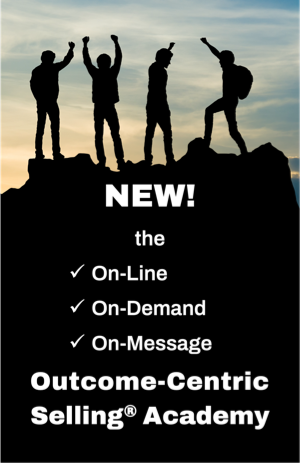Why Facts Matter When Forecasting
February 5, 2025

This article was first published in the February 2025 edition of Top Sales Magazine (link below).
 It’s hard to avoid the conclusion that the ability to accurately forecast revenues is a critical competence for individual salespeople and for every subsequent layer in the sales management ladder, often up-to and including the CEO. Getting it wrong can (and often does) have significant individual and organisational consequences.
It’s hard to avoid the conclusion that the ability to accurately forecast revenues is a critical competence for individual salespeople and for every subsequent layer in the sales management ladder, often up-to and including the CEO. Getting it wrong can (and often does) have significant individual and organisational consequences.
This is particularly challenging in the relatively-high-value, relatively-low-volume environments that are characteristic of complex B2B sales. Every opportunity needs to be accurately qualified and forecasted - and the more advanced the opportunity, the more important this becomes.
We can’t afford to treat every opportunity that appears to be at the same stage in the same way. We need to build our forecasts from the bottom-up, deal-by-deal, and based on evidence rather than hope or assumption. I believe that this leads to some obvious conclusions...
Being clear what we mean by “close date”
Every CRM system requires the salesperson to enter a “close date” when creating an opportunity - and yet at an early stage this may be no more than guesswork. Here are a few ways to reduce the imprecision inherent in this approach:
- Insist that salespeople base the initial close date on as much evidence as possible - for example, in the absence of opportunity-specific evidence, how long have similar deals taken to close? We need to encourage evidence-based conservatism rather than irrational optimism
- Require the salesperson to define the source of the close date for every opportunity, using one of the following three categories:
- The customer has credibly explained why they MUST make a commitment by the projected close date, and this has been verified in email
- The customer has explained why they WANT to make a commitment by the projected close date, but either we or they acknowledge that it could slip
- The salesperson HOPES to close the opportunity by this date, but this has not yet been discussed or verified with the prospect
- Most opportunities, at least initially, are based on hope. But the longer this situation prevails, the less confidence we can have in the close date
- The projected close date needs to be consistent with the current phase of our sales process / the customer’s buying decision journey. Projected close dates must never depend on a miracle happening
- Finally, the close date must never be “past due” and must be regularly reviewed. And the more often it has to be updated, the less likely the opportunity is to close
Accurately assessing the current phase/stage of the opportunity
It ought to go without saying that every salesperson (and manager) needs to have a clear and consistent understanding of the current phase or stage in the development of each opportunity, and that this assessment needs to be based on evidence rather than hope.
It’s particularly important that we establish what needs to happen during each phase or stage, and that that clearly observable, buying-behaviour-based, verifiable milestones are established and verified before an opportunity can be advanced to the next stage.
Forecasting accuracy (and sales performance) is further improved when these stages are based on current status of the buyer’s decision journey, and not just the sales activities we expect our salespeople to have performed. There is increasingly compelling evidence that buying-phase based approaches are more effective than sales-stage based approaches - not least of which because they require the salesperson to be aware of where each prospect is in their buying journey.
The importance of deal velocity and qualification
The speed with which an opportunity is advancing from one stage/phase to the next has tremendous predictive value. The deals we end up winning almost always advance significantly faster than deals we end up losing - so if we are going to lose, we had better lose early!
This highlights the importance of accurate and regularly-reviewed opportunity qualification - and because our prospect’s situation can change at any time, labelling a specific sales stage “qualified” and never revisiting the issue is counter-productive and may result in unjustifiable over-confidence.
Predicting future performance
It’s understandable for the focus on sales forecasting to revolve primarily around what is going to be closed in the current period. But if we don’t pay enough attention to what is likely to happen in future periods, we are likely to perpetuate an unbroken sequence of end-of-period panics (and, all-too-often, failures).
That’s why we also need to understand the shape of our future pipelines. Armed with an understanding of the quality and quantity of business with future-period close dates, and the typical behaviour of such opportunities, we can start to make informed predictions of future performance - and identify the need for remedial action.
Not all deals are equal
Above and beyond the need to accurately qualify every opportunity, we also need to recognise that different types of deal behave differently. Net new business has a lower conversion rate than new projects in existing customers or extensions to existing customer projects.
The much-quoted “3x” coverage target is inevitably precisely wrong. The required figure is typically far higher for net new projects and often somewhat lower for existing customer opportunities. We must understand and apply our own evidence-based projections for these different opportunity types!
Accurate forecasting is far easier if we rely on science and not on hope - at least that’s what I think. What about you?
Here's the link to subscribe (it's free) to Top Sales Magazine: http://bit.ly/35uAeuR


Comments